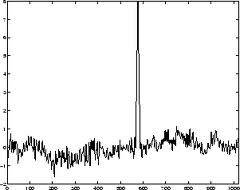Types of Seizures
There are many different types of seizures. People may experience just one type or more than one. The kind of seizure a person has depends on which part and how much of the brain is affected by the electrical disturbance that produces seizures. Experts divide seizures into generalized seizures (absence, atonic, tonic-clonic, myoclonic), partial (simple and complex) seizures, nonepileptic seizures and status epilepticus.
Generalized
Generalized seizures affect both cerebral hemispheres (sides of the brain) from the beginning of the seizure. They produce loss of consciousness, either briefly or for a longer period of time, and are sub-categorized into several major types: generalized tonic clonic; myoclonic; absence; and atonic.
Partial
In partial seizures the electrical disturbance is limited to a specific area of one cerebral hemisphere (side of the brain). Partial seizures are subdivided into simple partial seizures (in which consciousness is retained); and complex partial seizures (in which consciousness is impaired or lost). Partial seizures may spread to cause a generalized seizure, in which case the classification category is partial seizures secondarily generalized.

- Simple - People who have simple partial seizures do not lose consciousness during the seizure. However, some people, although fully aware of what's going on, find they can't speak or move until the seizure is over. They remain awake and aware throughout. Sometimes they can talk quite normally to other people during the seizure. And they can usually remember exactly what happened to them while it was going on. However, simple partial seizures can affect movement, emotion, sensations, and feelings in unusual and sometimes even frightening ways.
- Complex - Complex partial seizures affect a larger area of the brain than simple partial seizures and they affect consciousness. During a complex partial seizure, a person cannot interact normally with other people, is not in control of his or her movements, speech or actions; cannot control what he or she is doing; and does not remember afterwards what happened during the seizure.
Nonepileptic
Nonepileptic seizures are episodes that briefly change a person's behavior and often look like epileptic seizures. The person having nonepileptic seizures may have internal sensations that resemble those felt during an epileptic seizure. The difference in these two kinds of episodes is often hard to recognize by just watching the event, even by trained medical personnel. But there is an important difference. Epileptic seizures are caused by abnormal electrical changes in the brain and, in particular, in its outer layer, called the cortex. Nonepileptic seizures are not caused by electrical disruptions in the brain.
Status Epilepticus
Most seizures end after a few moments or a few minutes. If seizures are prolonged, or occur in a series, there is an increased risk of status epilepticus. The term literally means a continuous state of seizure and is considered a medical emergency. Status Epilepticus is defined as 30 minutes of uninterrupted seizure activity. An estimated 42,000 deaths and thousands more instances of brain damage per year follow episodes of status. Status epilepticus is most common in the very young and the very old, with the lowest incidence at ages 15-40.